Dual Clutch Automatic Transmission Explained

The evolving transmission systems can seem to be a complex subject if you do not follow the auto industry regularly. Over the years, different transmissions systems have made it to the market. Manual transmission has been around for the longest. However, it isn´t easy to drive and that forced automakers to consider alternatives.
One such alternative is a dual-clutch automatic transmission. Before you head out to buy your next car, learn about dual-clutch automatic transmission and understand if it's the one for you. Let us explore more about this transmission system!
What Is Dual-Clutch Automatic Transmission (DCT)?
Dual Clutch Automatic Transmission is also referred to as Direct Shift Gearbox. Most automakers have their unique version of DCT. However, they use DCT selectively across their range. Like so many innovations in vehicle transmission, the dual-clutch automatic transmission is a concept that has been there for years but is only new being out to use.
The Porsche 956, launched in 1983, was the first vehicle to sport a DCT. Several built-in computers help DCT to function. These computers prevent the need for manual inputs to shift gear. In other words, DCT automates the process of changing gears.

Photo Credit: www.matfoundrygroup.com
How Does Dual Clutch Transmission (DCT) Work?
With that introduction, you might have a fair idea about DCTs now. But, how does a dual-clutch transmission work? One of the primary benefits of DCT is that it minimises the time gap between changing gears.
In this transmission type, computerised clutches have a concentrical placement. Also, the crankshaft is connected to the clutch and is always ready to change to another. The countershafts have two cylindrical shafts that are independent. One of the countershafts in DCT is for even gear numbers, while the other is for odd.
The computer automatically anticipates the following gear ratio when the output shaft runs at a specific gear ratio. For this purpose, the computers analyse acceleration, deceleration, engine speed, and ongoing speed.
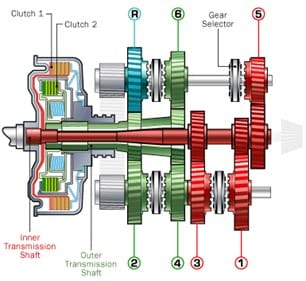
Pros of Dual Clutch Transmission (DCT)
Several benefits of opting for a vehicle with a dual clutch automatic transmission. We have discussed a few below:
- DCTs tend to offer better fuel efficiency than other automatic transmissions. It also delivers a smoother and seamless performance.
- Owing to their fuel efficiency and high-quality performance, many fleet owners prefer DCTs. Due to these advantages, DCTs are also ideal for significant long-term savings.
- Since they allow to shift gears smoothly and swiftly, the dual-clutch automatic transmission has also found its place in performance driving.

Photo Credit: mediapool.bmwgroup.com
Cons of Dual Clutch Transmission (DCT)
Each type of transmission comes with its cons. However, the cons of DCT are pretty easy to navigate over time. In any case, let's look at the setbacks of dual-clutch automatic transmission:
- Most car owners claim that DCT is more complex than other transmission systems.
- Also, DCT takes more room under the hood than any other transmission system.
If we compare Dual-clutch transmission to manual, CVT or any other transmission, DCT emerges as the winner. By navigating some of its downfalls, DCT can become the next big thing in automobiles.
Trending News
 1 min readYamaha YZF-R2 Name Trademarked In India
1 min readYamaha YZF-R2 Name Trademarked In India 1 min readTriumph Tracker 400: In Pictures
1 min readTriumph Tracker 400: In Pictures
Latest News
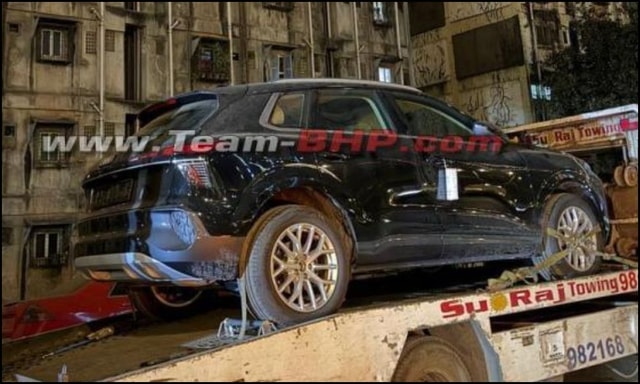 car&bike Team | Dec 19, 2025Next-gen Audi Q3 Spied In India Ahead Of Launch In 2026Third-gen Q3 made its global debut in mid-2025, getting notable tech upgrades and electrified powertrain options.2 mins read
car&bike Team | Dec 19, 2025Next-gen Audi Q3 Spied In India Ahead Of Launch In 2026Third-gen Q3 made its global debut in mid-2025, getting notable tech upgrades and electrified powertrain options.2 mins read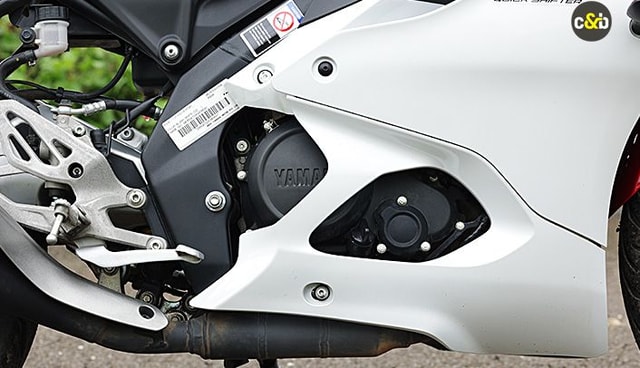 car&bike Team | Dec 19, 2025Yamaha YZF-R2 Name Trademarked In IndiaThe Yamaha R15, one of Yamaha India’s most popular motorcycle models, is likely to continue, even when the R2 finally makes it debut.1 min read
car&bike Team | Dec 19, 2025Yamaha YZF-R2 Name Trademarked In IndiaThe Yamaha R15, one of Yamaha India’s most popular motorcycle models, is likely to continue, even when the R2 finally makes it debut.1 min read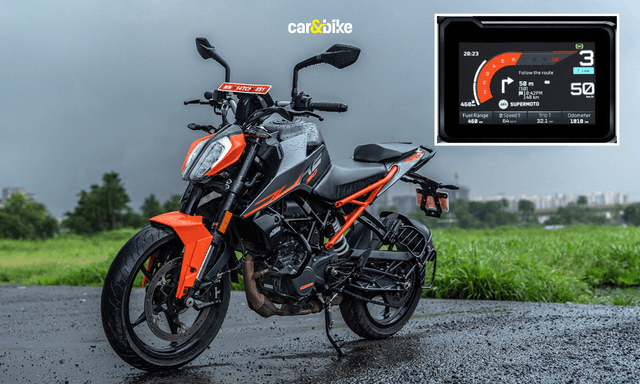 car&bike Team | Dec 18, 2025KTM 160 Duke With TFT Dash launched At Rs 1.79 LakhThe 5-inch colour TFT dash is borrowed from the 390 Duke and is shared across the brand’s sub-400cc lineup.2 mins read
car&bike Team | Dec 18, 2025KTM 160 Duke With TFT Dash launched At Rs 1.79 LakhThe 5-inch colour TFT dash is borrowed from the 390 Duke and is shared across the brand’s sub-400cc lineup.2 mins read car&bike Team | Dec 18, 2025Lamborghini Urus Seized By Cops Following Viral Clip Of Speeding On Bandra-Worli Sea LinkThe car was seized after a video of it allegedly overspeeding on the Bandra–Worli Sea Link, where the speed limit is capped at 80 kmph, went viral.2 mins read
car&bike Team | Dec 18, 2025Lamborghini Urus Seized By Cops Following Viral Clip Of Speeding On Bandra-Worli Sea LinkThe car was seized after a video of it allegedly overspeeding on the Bandra–Worli Sea Link, where the speed limit is capped at 80 kmph, went viral.2 mins read car&bike Team | Dec 18, 20252025 Ducati XDiavel V4 India Launch Details RevealedThe new Ducati XDiavel V4 will be launched towards the end of December 2025 and will sit alongside the standard Ducati Diavel V4.3 mins read
car&bike Team | Dec 18, 20252025 Ducati XDiavel V4 India Launch Details RevealedThe new Ducati XDiavel V4 will be launched towards the end of December 2025 and will sit alongside the standard Ducati Diavel V4.3 mins read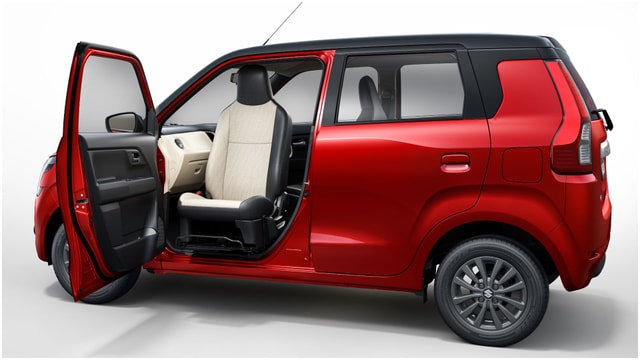 Amaan Ahmed | Dec 18, 2025Maruti WagonR Swivel Front Seat Kit Launched: Check Price, AvailabilityBangalore-based startup TrueAssist Technology Private Limited has developed a mechanism that allows the front passenger seat to swivel outwards, in a bid to improve accessibility for the aged and persons with disabilities.2 mins read
Amaan Ahmed | Dec 18, 2025Maruti WagonR Swivel Front Seat Kit Launched: Check Price, AvailabilityBangalore-based startup TrueAssist Technology Private Limited has developed a mechanism that allows the front passenger seat to swivel outwards, in a bid to improve accessibility for the aged and persons with disabilities.2 mins read
 Bilal Firfiray | Dec 19, 2025Maruti Suzuki e-Vitara Review: Worth The Wait?After a long wait, the first-ever electric Maruti Suzuki is here. It’s the e-Vitara, and it comes with a few promises. But arriving this late, is it worth the wait? Or is it a case of too little, too late?9 mins read
Bilal Firfiray | Dec 19, 2025Maruti Suzuki e-Vitara Review: Worth The Wait?After a long wait, the first-ever electric Maruti Suzuki is here. It’s the e-Vitara, and it comes with a few promises. But arriving this late, is it worth the wait? Or is it a case of too little, too late?9 mins read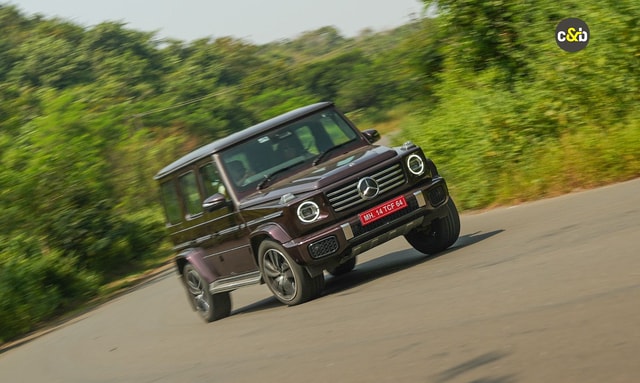 Bilal Firfiray | Dec 18, 2025Mercedes-Benz G450d: The Subtle Power of EvolutionThe Mercedes-Benz G 450d evolves subtly with more power, improved efficiency, and modern tech, while staying true to the timeless G-Class design. And character.4 mins read
Bilal Firfiray | Dec 18, 2025Mercedes-Benz G450d: The Subtle Power of EvolutionThe Mercedes-Benz G 450d evolves subtly with more power, improved efficiency, and modern tech, while staying true to the timeless G-Class design. And character.4 mins read Janak Sorap | Dec 11, 2025Harley-Davidson X440 T First Ride Review: Smarter and SharperHarley-Davidson has taken the X440 and given it a more focused and engaging twist. The result is the X440 T—essentially the same platform but updated in areas that give the motorcycle more appeal and riders more thrill.5 mins read
Janak Sorap | Dec 11, 2025Harley-Davidson X440 T First Ride Review: Smarter and SharperHarley-Davidson has taken the X440 and given it a more focused and engaging twist. The result is the X440 T—essentially the same platform but updated in areas that give the motorcycle more appeal and riders more thrill.5 mins read Shams Raza Naqvi | Dec 10, 20252025 Mini Cooper Convertible Review: More Colour On Indian RoadsThe updated Mini Cooper Convertible is set to be launched in the Indian market in the next few days. We drive it around Jaisalmer for a quick review.5 mins read
Shams Raza Naqvi | Dec 10, 20252025 Mini Cooper Convertible Review: More Colour On Indian RoadsThe updated Mini Cooper Convertible is set to be launched in the Indian market in the next few days. We drive it around Jaisalmer for a quick review.5 mins read Bilal Firfiray | Dec 8, 2025Tata Sierra Review: India’s New Favourite?Marking its return after a few decades, the reborn Sierra has made everyone sit up and take notice. But is it worth the hype?10 mins read
Bilal Firfiray | Dec 8, 2025Tata Sierra Review: India’s New Favourite?Marking its return after a few decades, the reborn Sierra has made everyone sit up and take notice. But is it worth the hype?10 mins read






























































































































